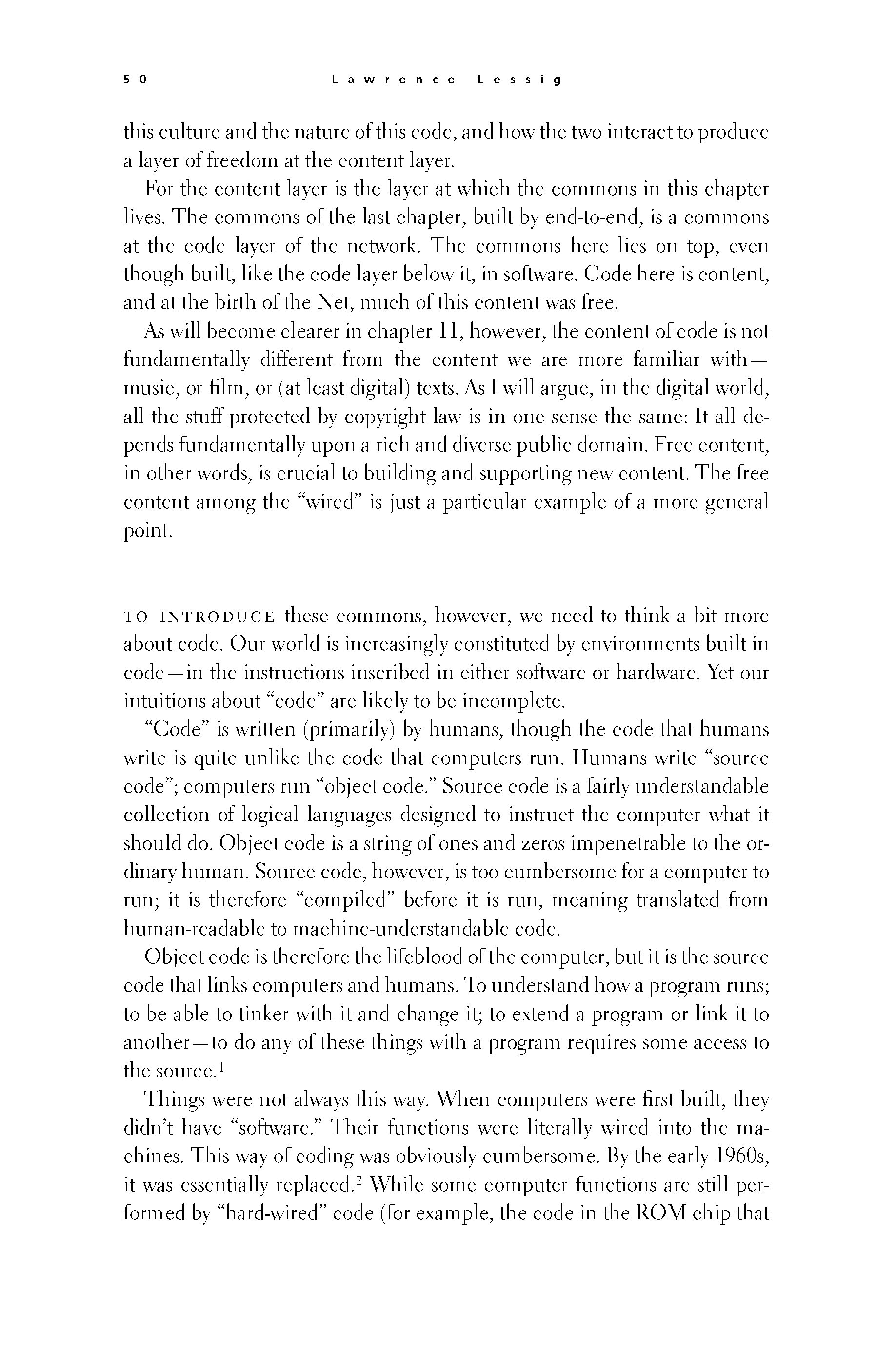 p049 _
-chap- _
toc-1 _
p050w _
toc-2 _
+chap+ _
p051
p049 _
-chap- _
toc-1 _
p050w _
toc-2 _
+chap+ _
p051
this culture and the nature of this code, and how the two interact to produce
a layer of freedom at the content layer.
For the content layer is the layer at which the commons in this chapter
lives. The commons of the last chapter, built by end-to-end, is a commons
at the code layer of the network. The commons here lies on top, even
though built, like the code layer below it, in software. Code here is content,
and at the birth of the Net, much of this content was free.
As will become clearer in Chapter 11, however, the content of code is not
fundamentally different from the content we are more familiar with --
music, or film, or (at least digital) texts. As I will argue, in the digital world,
all the stuff protected by copyright law is in one sense the same: It all de-
pends fundamentally upon a rich and diverse public domain. Free content,
in other words, is crucial to building and supporting new content. The free
content among the "wired" is just a particular example of a more general
point.
///\\\
To introduce these commons, however, we need to think a bit more
about code. Our world is increasingly constituted by environments built in
code -- in the instructions inscribed in either software or hardware. Yet our
intuitions about "code" are likely to be incomplete.
"Code" is written (primarily) by humans, though the code that humans
write is quite unlike the code that computers run. Humans write "source
code"; computers run "object code." Source code is a fairly understandable
collection of logical languages designed to instruct the computer what it
should do. Object code is a string of ones and zeros impenetrable to the or-
dinary human. Source code, however, is too cumbersome for a computer to
run; it is therefore "compiled" before it is run, meaning translated from
human-readable to machine-understandable code.
Object code is therefore the lifeblood of the computer, but it is the source
code that links computers and humans. To understand how a program runs;
to be able to tinker with it and change it; to extend a program or link it to
another -- to do any of these things with a program requires some access to
the source.[4-1]
Things were not always this way. When computers were first built, they
didn't have "software." Their functions were literally wired into the ma-
chines. This way of coding was obviously cumbersome. By the early 1960s,
it was essentially replaced.[4-2] While some computer functions are still per-
formed by "hard-wired" code (for example, the code in the ROM chip that
[[50]]
p049 _
-chap- _
toc-1 _
p050w _
toc-2 _
+chap+ _
p051